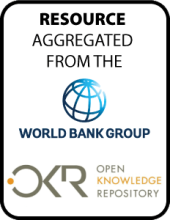Land Library Search
Through our robust search engine, you can search for any item of the over 73,000 highly curated resources in the Land Library.
If you would like to find an overview of what is possible, feel free to peruse the Search Guide.
/ library resources
Showing items 1 through 9 of 164.Sustainable development goals (SDGs)
placed access to basic services at the center of
international development in 2016-2030. Out of 17 goals,
five address the access of poor people to basic services: to
The current report is part of the work
on integrating poor areas and marginalized communities in
Romania. Specifically, the Bank's technical assistance
provided through this project focuses on three primary
As India continues to urbanize and move
towards a less agricultural- and more industry-based
economy, land demands will continue to grow. Its urban
population is expected to increase by more than 200 million
This paper examines the spatial
organization of jobs in Kampala, the capital city of Uganda,
and applies the Lucas and Rossi-Hansberg (2002) model to
explain the observed patterns in terms of the agglomeration
This paper aims to contribute to
learning on community engagement and community driven
development (CDD) in urban areas. Specifically, the review
describes the World Bank’s use of participatory and CDD
Paralleling the increasing disparities
in income and wealth worldwide since the 1980s, cities in
developing countries have witnessed the emergence of a
growing divergence of lifestyles, particularly within the
This paper presents the conceptual framework for a training program on
integrating disaster risk reduction and climate-change mitigation into
Agriculture and Rural Development Department (ARD) programming. Its
The term “inclusive cities” is
increasingly being used as a “catch-all” phrase to signify
intent but with little precision in its use. In this note we
use “inclusive cities” to mean cities in which we see a
In 2012, the World Bank initiated the
building urban resilience in East Asia program, aimed at
increasing the resilience of cities to disasters and the
impact of climate change by using a risk-based approach to

